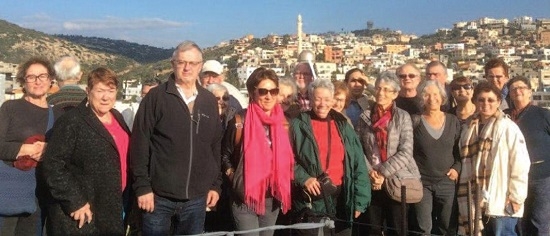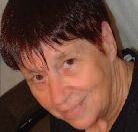A Journey of Discovery
Readers of ESRA magazine are undoubtedly familiar with the articles of Lydia Aisenberg, a prolific writer whose stories in every issue range widely among subjects as disparate as travels abroad and historical figures in Israel.
Recently, those of us associated with the magazine as writers, editors, admin staff and others were privileged to put a face to her name, on a personal tour guided by Lydia to Givat Haviva, The Center for Shared Society, where she works in the international department, and to towns and sites in the area. We discovered that not only is Lydia an excellent writer, but she is also a superb speaker and tour guide, who has devoted decades to furthering Arab-Jewish coexistence in the area she knows so well.
It was a journey of discovery. Not many of us are familiar with Givat Haviva, and fewer still with Harish and with the Arab towns East and West Barta'a and Katzir. In visiting them, we saw how the lives of Arabs and Jews here are intertwined in many ways, but also separated.
Givat Haviva is a non-profit organization founded in 1949 as the national education center of The Kibbutz Artzi Federation (Hashomer Hatzair) in Israel. It is dedicated to promoting mutual responsibility, civic equality and cooperation between divided groups in Israel as the foundation for building a shared future and shared society.
After hearing about the work done there, we toured the area, stopping first at Harish. This town, soon to be a city, is located between Hadera and Haifa and between Road 6 and the Green Line and has a colorful history. It started as a Hashomer Hatzair kibbutz of that name, disbanded a decade later and until recent times was used as a Border Police base. Since the late 1980s, an area close to the base began to be developed as a future town; the first inhabitants new immigrants from the Former Soviet Union, Jewish Hari Krishna families, orthodox and secular Jews and a group of Israeli-Arab families from Ramle.
The present population is around 4,000 but expected to reach 50,000 over the next five years, the ultimate aim being 100,000. With the massive construction being undertaken in present times, the nearby Israeli Muslim village of Umm el-Kutuf (perched on two adjacent hilltops) has become hemmed in on three sides with a massive quarry on the fourth.
From Harish, we crossed the Green Line to East Barta'a. The divided village of Barta'a straddles both sides of the 1949 Armistice Line in the Wadi Ara region. Western Barta'a is in the Haifa district of Israel and its 4,700 residents are Arab citizens of Israel. Eastern Barta'a, in the Palestinian territories, has 3,600 residents, of whom 30-40 percent carry Israeli identity cards and the rest of whom carry Palestinian identity cards.
We stopped at the checkpoint known as Rehan-Barta, where about 4,000 Palestinians pass through in the morning on their way to work in East Barta'a and Israel and return back in the evening. Finally, we stopped at an observation platform in Katzir, one of the 7 Star communities constructed in the 1980s at the initiative of Arik Sharon where we enjoyed a superb over-all view of the towns, both Jewish and Arab, in the area, before paying a quick call to Israeli West Barta'a, where our group photograph was taken.
Many thanks to Lydia for an informative and fascinating trip.
If you wish to visit Givat Haviva, contact: Lydia Aisenberg,This email address is being protected from spambots. You need JavaScript enabled to view it.









Comments